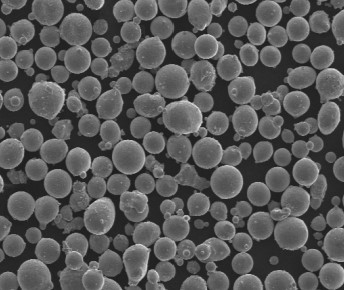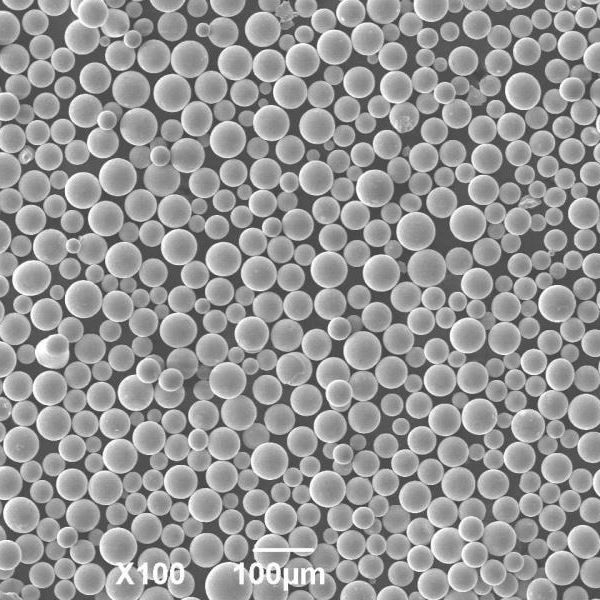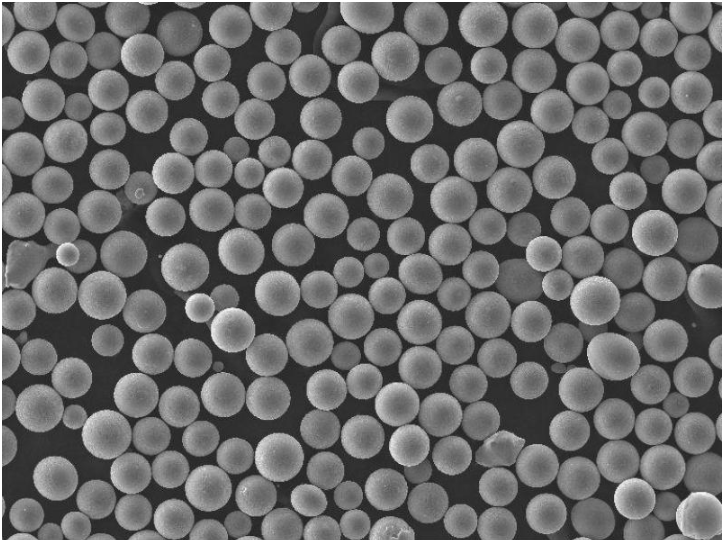Best 17-4PH powder stainless steel powder for 3D Printing
17-4PH powder, also known as 17-4 Precipitation Hardening stainless steel powder, is a high-strength, corrosion-resistant material used in various industries. It belongs to the martensitic stainless steel family and offers an excellent combination of mechanical properties and corrosion resistance. The “17-4PH” designation refers to the composition of the alloy, which consists of approximately 17% chromium, 4% nickel, 4% copper, and a small amount of other elements.
Fast Delivery
High sphericity
High Quality
Small MOQ
Share This Product
Product Description
Introduction
In the world of materials science, 17-4PH powder has gained significant recognition for its exceptional properties and diverse applications. This article aims to provide a comprehensive guide to 17-4PH powder, exploring its composition, properties, manufacturing process, applications, advantages, and more. Whether you’re an engineer, researcher, or simply curious about advanced materials, this article will unveil the wonders of 17-4PH powder.
What is 17-4PH Powder?
17-4PH powder, also known as 17-4 Precipitation Hardening stainless steel powder, is a high-strength, corrosion-resistant material used in various industries. It belongs to the martensitic stainless steel family and offers an excellent combination of mechanical properties and corrosion resistance. The “17-4PH” designation refers to the composition of the alloy, which consists of approximately 17% chromium, 4% nickel, 4% copper, and a small amount of other elements.
Composition and Properties
Chemical Composition
The chemical composition of 17-4PH powder plays a vital role in determining its properties. The approximate composition includes:
- Chromium (Cr): 15.0-17.5%
- Nickel (Ni): 3.0-5.0%
- Copper (Cu): 3.0-5.0%
- Manganese (Mn): 1.0% max
- Silicon (Si): 1.0% max
- Columbium + Tantalum (Cb+Ta): 0.15-0.45%
- Carbon (C): 0.07% max
- Phosphorus (P): 0.04% max
- Sulfur (S): 0.03% max
Mechanical Properties
17-4PH powder exhibits excellent mechanical properties, making it suitable for a wide range of applications. Some notable properties include:
- Tensile Strength: 110,000-160,000 psi
- Yield Strength: 80,000-150,000 psi
- Elongation: 5-15%
- Hardness: 30-45 HRC (Rockwell C)
- Impact Toughness: 15-30 ft-lb
Manufacturing Process
The manufacturing process of 17-4PH powder involves several stages to achieve the desired properties. It typically begins with atomization, where the molten alloy is rapidly cooled to form fine powder particles. These particles are then screened and classified to obtain the desired size distribution. Subsequently, the powder undergoes compaction and sintering, which involves applying heat and pressure to solidify the material. The final step includes post-processing treatments such as heat treatment and surface finishing.
Applications
17-4PH powder finds applications across various industries due to its exceptional properties. Some prominent applications include:
Aerospace Industry
In the aerospace industry, 17-4PH powder is utilized in manufacturing components for aircraft and spacecraft. Its high strength, corrosion resistance, and excellent fatigue properties make it suitable for critical parts like landing gear, turbine engine components, and structural components.
Medical Industry
The medical industry benefits from 17-4PH powder in the production of surgical instruments, orthopedic implants, and medical devices. The material’s biocompatibility, strength, and resistance to corrosion make it an ideal choice for applications where reliability and durability are paramount.
Oil and Gas Industry
17-4PH powder plays a crucial role in the oil and gas industry, particularly in offshore drilling and exploration. It is used in the manufacturing of valves, pumps, and other equipment that require high strength, corrosion resistance, and resistance to sulfide stress cracking.
Automotive Industry
In the automotive sector, 17-4PH powder finds application in various components such as suspension systems, engine parts, and transmission components. Its excellent combination of strength, toughness, and wear resistance contributes to enhanced performance and longevity.
Other Applications
Beyond the aforementioned industries, 17-4PH powder is also employed in applications like chemical processing equipment, power generation, marine components, and general machinery. Its versatility and remarkable properties make it a preferred choice for demanding environments.
Advantages and Benefits
The utilization of 17-4PH powder offers several advantages and benefits, including:
- High Strength: 17-4PH powder exhibits impressive strength, allowing for the design of lightweight yet sturdy components.
- Corrosion Resistance: The alloy’s composition provides excellent resistance to corrosion, reducing the risk of material degradation in various environments.
- Precipitation Hardening: 17-4PH powder can be heat treated to enhance its mechanical properties, further increasing its strength and hardness.
- Versatility: The material’s broad range of applications highlights its versatility and adaptability to different industries and environments.
- Cost-Effectiveness: Despite its exceptional properties, 17-4PH powder offers a cost-effective solution due to its long lifespan and minimal maintenance requirements.
Comparisons with Other Materials
When comparing 17-4PH powder with other materials, its unique combination of properties sets it apart. Unlike traditional stainless steels, 17-4PH powder exhibits higher strength and hardness, along with improved corrosion resistance. It can often replace more expensive materials like titanium, resulting in cost savings without compromising performance.
Maintenance and Handling
To ensure optimal performance and longevity, proper maintenance and handling of 17-4PH powder components are essential. Regular inspection, cleaning, and adherence to manufacturer guidelines for usage and storage will help prevent premature wear or corrosion. Additionally, implementing suitable lubrication and avoiding exposure to harsh chemicals or extreme temperatures will contribute to the material’s longevity.
Precautions and Limitations
While 17-4PH powder offers remarkable properties, there are certain precautions and limitations to consider. Some key points include:
- Heat Treatment Sensitivity: Improper heat treatment can negatively affect the mechanical properties of 17-4PH powder, leading to reduced performance. It is crucial to follow recommended heat treatment procedures.
- Welding Challenges: Welding 17-4PH powder can be challenging due to its susceptibility to hot cracking and distortion. Expertise and proper welding techniques are required to overcome these challenges successfully.
- Restricted Formability: Compared to some other materials, 17-4PH powder exhibits limited formability. Complex shapes may require additional processing or alternative manufacturing methods.
Future Developments and Trends
As technology advances, ongoing research and development aim to enhance the properties and expand the applications of 17-4PH powder. The incorporation of advanced manufacturing techniques, such as additive manufacturing (3D printing), shows promising potential for the production of complex components with tailored properties. Additionally, efforts to optimize the material’s microstructure and explore new alloy compositions are ongoing, further pushing the boundaries of what 17-4PH powder can achieve.
Conclusion
In conclusion, 17-4PH powder stands as a remarkable material with a wide range of applications across various industries. Its unique combination of high strength, corrosion resistance, and versatility make it a sought-after choice for critical components in aerospace, medical, oil and gas, automotive, and other sectors. As advancements continue, 17-4PH powder is poised to play an even more significant role in shaping the future of materials engineering.
FAQs (Frequently Asked Questions)
- Q: Is 17-4PH powder suitable for outdoor applications exposed to harsh weather conditions?
A: Yes, 17-4PH powder’s corrosion resistance makes it suitable for outdoor applications, even in challenging environments.
- Q: Can 17-4PH powder be used in contact with human tissues and fluids?
A: Absolutely. 17-4PH powder exhibits excellent biocompatibility, making it suitable for medical implants and surgical instruments.
- Q: How does 17-4PH powder compare to traditional carbon steels in terms of strength?
A: 17-4PH powder offers significantly higher strength than traditional carbon steels, making it an attractive choice for demanding applications.
- Q: Can 17-4PH powder be machined easily?
A: While 17-4PH powder can be machined, its hardness and strength may require special tooling and machining techniques.
- Q: What is the lifespan of components made from 17-4PH powder?
A: With proper maintenance, components made from 17-4PH powder can have a long lifespan, often outperforming other materials in terms of durability.
PREP System
AM Powder
Sent Inquiry
Any questions? Send us message now! We’ll serve your request with a whole team after receiving your message.
Related products
-

Best Inconel 738LC powder for 3D printing in 2023
Inconel 738LC powder is a remarkable superalloy that boasts exceptional…
-

304l Stainless Steel Powder
Additive manufacturing (AM), also known as 3D printing. 3D printing…
-

H13 Alloy Steel Powder For 3D Printing
Our nitrogen atomized H13 alloy steel powder has good hardenability,…
-

Spherical Titanium Alloy Powder
3D printing titanium alloy powder TiTaNbZr for medical.
Applications
How we play a role in the industry
HIP Technology
Hot Isostatic Pressing (HIP) technology works by placing the product in a closed container, filling it with inert gas and sintering or densifying the product at a very high temperature (usually close to the forging temperature of the material) and at a very high pressure (usually 100 – 140 MPa). This allows the product to be sintered or densified.
MIM Technology
MIM products can be complex in shape, precise in size, high in strength and produced automatically in large quantities, and can significantly reduce the complexity and cost of traditional metalworking
SLM Technology
SLM, also known as Selective Laser Melting, is similar in principle to SLS in that a laser is used to melt and solidify metal powder in a specified area, which is then moulded in a layer-by-layer stack.
EBM Technology
Electron beam melting refers to a vacuum melting method in which the kinetic energy of a high speed electron beam stream is converted to heat as a heat source for melting metals under high vacuum. The abbreviation is EBM.
POPULAR SERVICE
Our Professional Services
For Additive Manufacturing
Various Products
Here we provide more than 40 grades of high-quality powders.
3D Printing
SEBM&PREP technology and equipment.
Customization
Accept OEM/ODM
No Risk
Perfect supply chain layout
High Quality
Top sales and quality
Fair Prices
High quality products at reasonable prices
Send Inquiry
Thank you for your interest in our products. If you have any enquiry about quotation or cooperation, please feel free to leave us message by using the following enquiry form. Our sales representative will contact you within 24 hours.


